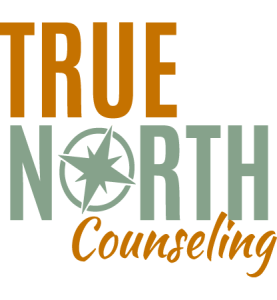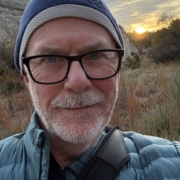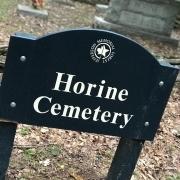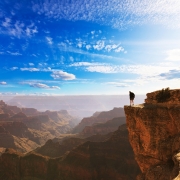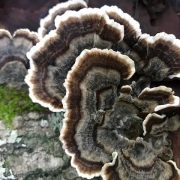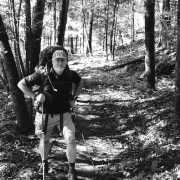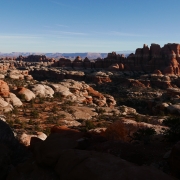Preparing for Your Own Armageddon | Healthy Aging Series: S12 E5
It was May 19, 1980. I had just spent three days on a religious retreat at the Havilah Retreat Center about 100 miles north of Vancouver, Washington. As a religious studies Student-Intern, I was asked to be part of a Deacon’s and Deaconess’ spiritual awakening weekend.
They were such wonderful people. Gracious. That’s how I would describe them. And Christlike, as in the Sermon on the Mount sense of the word, not the more modern ill-liberal, bigoted sense. I miss that earlier variant of the church. It’s now mutated into something more noxious.
We prayed, we sang hymns, and we renewed ourselves to be more loving. Nothing, we concluded, nothing is more beautiful to God than a loving church.
We gathered in the bus to head back to Portland and noticed a heavy coating of dust on the windshield. And of course, it started raining, but the rain made it worse.
There was no radio on the bus, no cell phones at that time, and what we didn’t know was that we had been 20 or 30 miles from Mount Saint Helens when it erupted. We also discovered that it wasn’t dirt on our windshield but volcanic ash. Everything in Portland was a mess. Ash everywhere. In the streets. Yards. Rooftops. And anything near a window had turned black. Yes, we wore face masks a couple of weeks, until two or three good rains washed the ash from the street down into the gutters.
It wasn’t Armageddon, but I’m sure someone took advantage of the situation and referred to it as such. And for the record, I don’t believe there will ever be a literal Armageddon, like some suggest, you know, a Book-of-Revelation-Armageddon.
Having said that, you and I will one day experience something that feels like an Armageddon in our lives. I’m not sure if you know anybody who has had a family member with Alzheimer’s or Dementia but what they would describe in those last years would feel like an Armageddon to the family, as they watch their loved one lose themselves.
We are all going to experience our Marginal Decade. I’ve preached to anyone that will listen that you have to prepare for the last 10 years of your life, because that decade will be one in which you will be more vulnerable and frailer than any other decade of your life. That’s your Marginal Decade. That’s Your Armageddon.
I’m culling articles from the Harvard Health Annual 2025 to share in season 12, what I’ve entitled, “Taking Care of Yourself Boot Camp.”
The article that I’m going to expand on is on pages 57 and 58 and is titled, “Life Can Be Challenging: Build Your Own Resiliency Plan.” Or Disaster Preparedness Plan?
I’m calling this episode, “Preparing for Your Own Armageddon.”
What is resiliency? Here’s what the Harvard Health Review provided as a definition:
“Resiliency is a psychological response that helps you adapt to life’s difficulties and seek a path forward through challenges. It’s a flexible mindset that helps you adapt, think critically, and stay focused on your values and what matters most, says Luana Marques, an associate professor of psychiatry at Harvard medical school.”
I did an episode in this blog on July 25, 2022, and here’s what I wrote about resiliency:
“Resiliency is the ability to recover or bounce back from difficulties. It means having a mental and physical toughness. Resiliency acts as a buffer between you and the difficulties that you are going to face in life. It’s very important especially as you age and approach old age.”
I share a five-step plan for developing resiliency that you might want to check out.
In its simplest terms, resiliency means developing into a mental and physical Badass, not an A-Hole, but someone that is able to withstand the storms, someone who never gives up, and someone who loves others, regardless of how they themselves are treated.
Badasses have unquenchable love. They are selfless and are champions for others. They use their strength to come to the aid of the helpless.
Resiliency isn’t just enduring the storm, it’s being the anchor for yourself and for others.
A true Badass isn’t egomaniacal, but public-spirited, compassionate, and noble. That means being selfless.
Resiliency doesn’t mean simply surviving or just making it.
We build our resiliency so that we can make a difference during whatever Armageddon we experience, or others experience.
We need to be strong for ourselves and others.
Here are three ideas that I have adapted from the Harvard Health Review:
To become more resilient, you need to shift the way you think about life, and I’ve developed three ways of thinking to become more resilient.
First, you need to learn that you have to do some things that you don’t want to do.
Second, you don’t get everything you want all the time.
Third, you have to learn to adjust to the things that won’t adjust to you.
These are the three things that I tell parents that every child has to learn, and I would apply those three things to adults as well. We are always in the process of learning these three things, but the more we shift our thinking in alignment with them, then the more resilient we become, and the more we are able to respond appropriately to people, places, and things.
You can look at any successful philosophy of life, including Buddhism and Stoicism, and they will tell you that most of your hardship in life comes from the way you think about life. This mental shift is changing how you think about life and will increase your badassery.
Next, to become more resilient you need to stop avoiding difficult tasks.
I have embraced that phrase from the mindfulness world that says, “What you practice grows stronger.”
It goes along with my adaptation of Emerson’s belief, “You are destined to become the person that you practiced to be.”
And it’s a little bit like that saying, “What doesn’t kill you will make you stronger.”
We train ourselves for badassery by doing the hard things.
If you want to be strong for your own Armageddon, you have to start getting stronger now, and the only way you can get stronger now is by working out now, not just physically, but mentally. Do the hard stuff.
The third way we become more resilient is by aligning our lives and behaviors with what we value.
I often ask my clients, “What’s important to you?”
The point of that very brief exercise is to then use these values to empower them and to embolden them to badassery, and by that, I mean empower them to do what’s important to them. Part of being a badass is being determined, it means being hell-bent.
Figuring out what is important to you and acting on those values will get you through any Armageddon
I value_________ (fill in the blank).
Here is a short list of what’s important to me:
1. I value meaningful relationships, like the one I have with my wife, and the relationships that I have with my sons, daughters-in-law, granddaughters, and friends.
2. I value being physically strong.
3. I value being mentally astute.
4. I value providing a safe and humane place for my employees to work.
5. I value exploring new and old places.
If you haven’t looked at Caroline Myss’ website on Archetypes, I encourage you to go and look at a full list of what she sees as personal archetypes, those inner psychic-figures that reflect what is important to you, how you see yourself, and how others see you.
When I did her quiz, my results were: Athlete, Explorer, Intellectual.
Those images that live within me, drive me to be stronger, and are preparing me for my Armageddon.
What are you doing to prepare for your Armageddon?
The real question isn’t if you were going to experience one, but when are you going to experience one?
Read my blog, episode from July 25, 2022, for more ideas and additional steps for developing resiliency.
Being a Badass might not be your thing.
How about being a tall, strong oak?
How about being a Superhero Character?
Maybe a Warrior?
Find something that will inspire you, and then, become more resilient and prepare for your own Armageddon.
